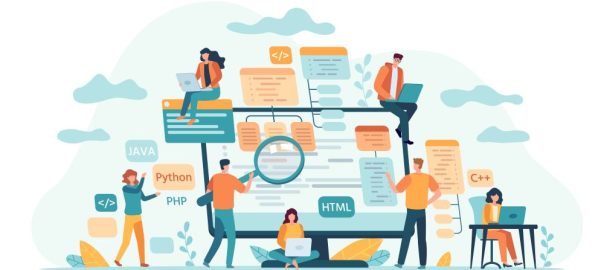Custom software for small businesses is what we specialize in. And here at Modest, we do our absolute best to give each client exactly what is needed. We get to know our clients’ businesses so that we can develop software that easily adapts to how they do things. Even so, the learning curve that comes with new software cannot be avoided.
Employees still need to learn how to use new software. They still need to learn how to navigate, how to complete basic tasks, and even how to troubleshoot to some extent. Learning all this information takes time. In software development, the amount of time and effort required is represented by the learning curve.
We Face It, Too
Before going on to explain how your organization can overcome the learning curve that comes with new software, we want you to know that we face the learning curve, too. We need to deal with it in relation to the technologies and tools we use to create custom business software.
Whenever a new technology merges, we need to learn how to use it. Likewise for new software development tools. You could say that our developers are in a constant state of education given the fact that our industry is evolving so rapidly. The main takeaway here is that we understand the learning curve. We feel your pain. That’s why we try to align software to a client’s workflow as much as possible.
Minimizing the Learning Curve
It is our position that the key to overcoming business software’s learning curve is to minimize it as much as possible. The shorter and less steep the learning curve is, the more quickly employees get beyond learning to return to maximum productivity. Here are some suggestions for doing just that:
1. Map Routine Tasks
You can help your software developers create better software by mapping the routine tasks your employees normally do on the computer. By mapping, we mean writing down the steps they take to complete a given task.
For example, how does a sales executive translate digital data into printed reports? Mapping all those steps provides information a software developer could use to make the process as simple and efficient as possible.
2. Ask for Feedback
During the early stages of software design, ask employees for feedback regarding your current software. Find out what they like and dislike about the package. Ask for any suggestions they might have for improving workflow. With that information, your developers will be better able to create custom business software that maximizes intuitiveness while simultaneously minimizing the need to learn new workflows.
3. Incentivize the Learning Process
Having to learn new software is unavoidable. Some amount of learning is always required. However, an innovative approach some companies are now beginning to look at is applying gamification to learning new business software.
Gamification is literally applying game-playing principles to incentivize the learning process. A good example would be sending employees through a series of learning modules followed by a quick review and on-screen test. Employees can compete for the highest test scores.
4. Leverage Demonstrations
Finally, do not rely exclusively on written documents to train employees. It is better to leverage hands-on demonstrations that encourage employees to walk through routine tasks with the help of an experienced trainer. Live demonstrations beat static training documents any day.
Choose Modest as your developer for custom business software and we can promise you will get software designed around your current workflows. We will also collaborate with you to overcome the learning curve that comes with new business software. Contact us to learn how we can build a custom software that suits your business

